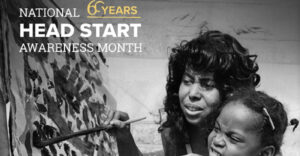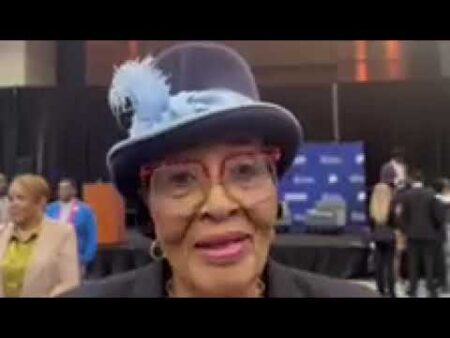“My dear boy, why don’t you try acting?”
Laurence Olivier’s quippy response to Dustin Hoffman’s story of how he stayed up three nights to fully inhabit the sleepless state of his character in the 1976 thriller Marathon Man may be the most oft-cited example of the absurd ends Method acting came to in America. But that anecdote, if Hoffman is to be believed, is misunderstood, if not apocryphal. Apparently Hoffman was staying up nights partying to get over a breakup and Olivier’s advice was given in sympathy rather than criticism. This is but one of the many myths and legends defanged, contextualized, or outright refuted in Isaac Butler’s scrupulously researched but eminently readable biography of an acting philosophy that dominated the 20th century—and continues to exercise influence on stages and screens of every size and shape to this day.
As with so much that has come to be thought of as uniquely American, the Method was born elsewhere. Konstantin Stanislavski established the Moscow Art Theatre (MAT) in 1898 with his partner, Vladimir Nemirovich-Danchenko, in response to a hidebound style of acting codified throughout Europe. Exaggerated declamatory speech was favored over realism. Sets were barely an afterthought and rehearsal and refinement of craft were unheard of. Theater was not a place to explore everyday events, and an actor’s own life was not a source to be inspired by.
The Method: How the Twentieth Century Learned to Act by Isaac Butler
Bloomsbury, hardcover, 501 pp, hardback $27, softcover $16.20, bloomsbury.com
Stanislavski sought to change that. His greatest ambition, defined and redefined endlessly over decades, was for an actor to inhabit their role from the inside. The Russian word for this idea is perezhivanye, which is often translated as “living the part,“ but is more like some kind of special empathy, or maybe a living through. Whatever it is, the road to get there would be fought over mercilessly by every practitioner and acolyte who came into contact with it.
Not unlike a cult, adherents of Stanislavski’s “system” began debating and reinterpreting it even within its first years. Vsevolod Meyerhold starred in MAT’s production of Chekhov’s The Seagull, the first successful mounting of a play—now an unquestioned classic—that was considered the most notorious flop of its day. But Meyerhold left and established his own experimental, highly Symbolist style of theater soon after. Other early students like Yevgeny Vakhtangov and Richard Boleslavsky would do the same. The door Stanislavski opened by exploring everyday behavior and psychology seemed to lead to different rooms for every individual who opened it.
It was Boleslavsky and Maria Ouspenskaya, another Stanislavski veteran, who established the first outlet for his gospel in the U.S. in 1922 with the American Laboratory Theatre, following a well-received MAT tour that featured revivals of The Seagull and other mainstays of the company’s repertory. At the time the American theater scene was in its infancy and hopelessly beholden to the same 18th- and 19th-century conventions prevalent in Russia decades earlier. Lee Strasberg, Stella Adler, and Sanford Meisner—perhaps the most recognized exponents of various styles of the Method—all spent time at the Lab school. And not unlike Stanislavski’s first followers, each founded their own church devoted to worshipping the master’s teaching in seemingly contradictory ways.
Butler is able to explain the various techniques, exercises, and approaches of acting from the inside because he lived it as an aspiring actor in his youth. He describes having to walk away from the practice after feeling chewed up by the intense inward exploration required under some of the Method-related systems his teachers espoused. Indeed, oftentimes, these acting exercises resemble experimental psychotherapy rather than preparation toward any kind of public performance. Each teacher comes off like a charismatic cult leader and many decisions by actors and directors to leave one group and join another read like personal, emotional betrayal.
Somehow this collection of intense, often troubled individuals, through harrowing, sometimes utterly ridiculous strategies, established a way of emoting that became the standard in the U.S., both on stage and screen. It is the movies, of course, that did the most to mainstream the Method in the persons of Marlon Brando, Marilyn Monroe, Robert De Niro, et al. But the Pandora’s box that Stanislavski hammered together around the turn of the 20th century continued to unleash personalized angels and demons for anyone who unlocked it. While one actor might insist that personal traumas are crucial to unlocking authentic emotion in performance, another favors obsessive research into a character’s profession or physical gestures. It’s no accident that even the man who started this revolution insisted on putting quotation marks around his “system,” because it was an ever-changing process, never to be truly codified or finished.
The stickiest criticism of the Method, one that goes all the way back to its nascency in Russia, is that it favors the actor over the play (or movie). By working by themselves apart from the text or their colleagues, they become the entire show and detract from any bigger picture. This is clear in movies where costars come from different schools. Watching Tilda Swinton in 2007’s Michael Clayton, for instance, is jarring because whatever it is she’s doing is in an entirely different universe than everything and everyone around her. To me, she’s the only reason to watch that film, but that only points up that production’s failure rather than Swinton’s incredible skill.
In his introduction, Butler calls his book a biography rather than a history—even though his subject is a school of acting rather than a person. I think he’s right to make that distinction, though his subject is really a many-headed Hydra-like creature, spawning new appendages quicker than anyone could hack the old ones off. He ends with the thought that though the Method inspired a lot of questionable personal behavior and often led to excess, it will always remain in the actor’s quiver. There’s just no putting this self-absorbed genie back in its bottle.







